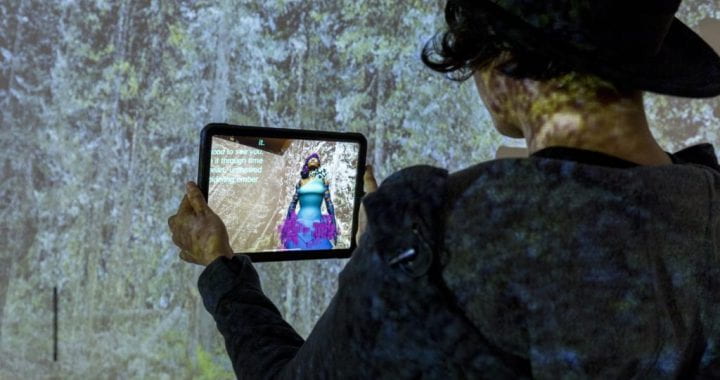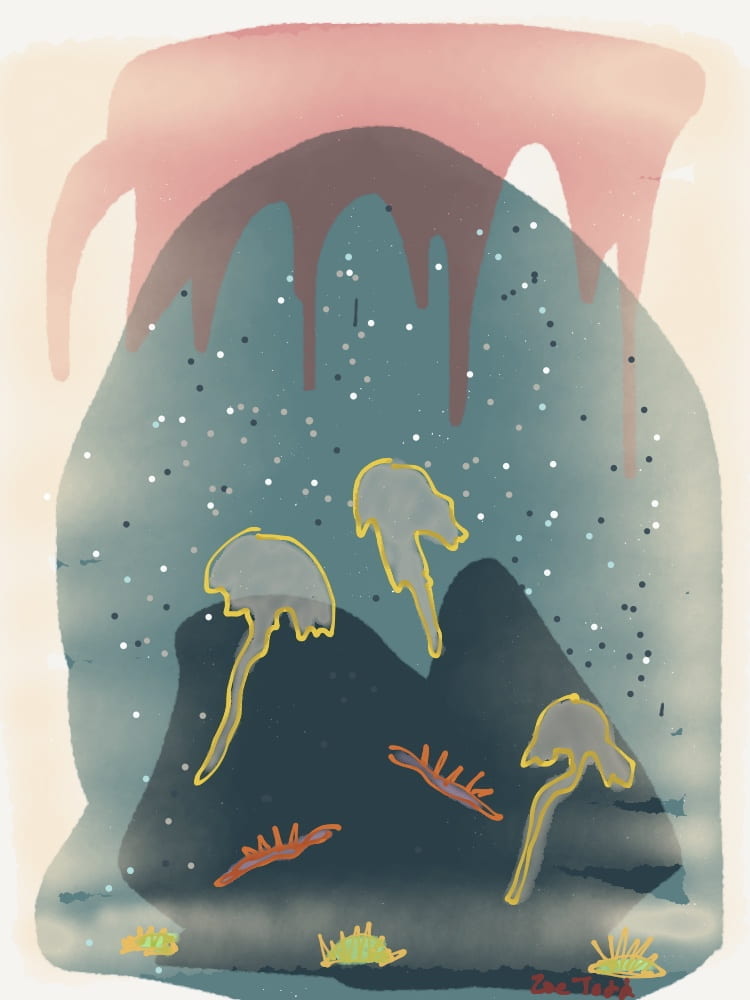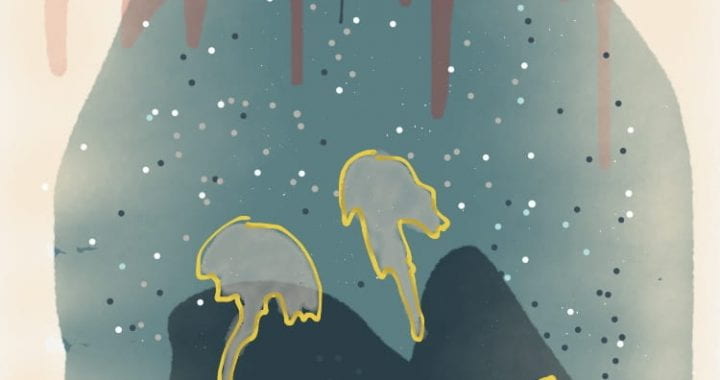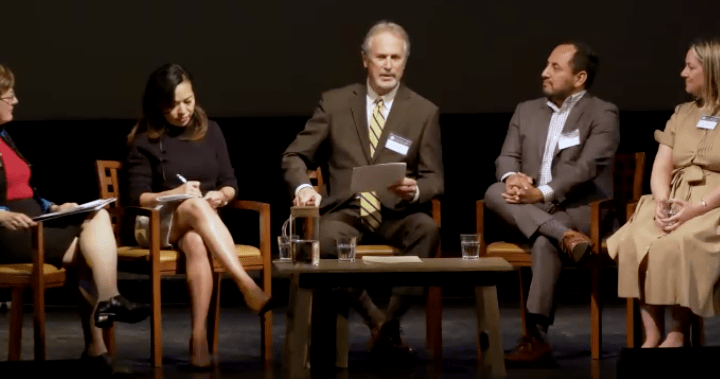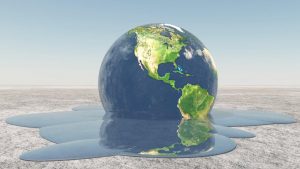"Plant Intelligence or Plant Signaling?"
SJWG Rapporteur Report
20 February 2015
Rapporteur Report by Samuael Topiary
In this provocative presentation, a packed house audience was treated to a fascinating
exploration of the ways in which one biologist is exploring the idea of plant intelligence.
Prof. van Volkenburgh presented her long time research into the ways in which corn and pea
crops deal with stress. In this work, van Volkenburgh studies the differences between wild
and cultivated plants in their responses to light exposure and water conditions in order to
understand the genetic aspects of drought tolerance. Comparing growth rates under different
light conditions, she was able to understand that plant photoreceptors that absorb blue & red
light are not chlorophyll but rather that the plant’s cells manage their growth based on light
and water conditions. She further explained that for certain strains of poplar and corn
hybrids, growth rate predicts yield and that certain types of commercially bred corn seed can
be shown to have less advantageous yields under drought conditions since light signaling
pathways influence growth rate. She thus concludes that high yield corn hybrids, which had
been selected for density and shade avoidance have inadvertently limited the (wild) corn’s
natural drought tolerance. She also demonstrated the ways in which corn, although
genetically perennial, has been bred as an annual and thus modern maize hybrids are not as
sensitive to light.
Van Volkenburgh concluded with a quote from Ambrose Bierce (1909) who suggested that
plants belong to the philosopher's class. She suggested that if we can increase our awareness
of what plants do, we might be able to breed plants that can deal with food scarcity in
Africa.
Natasha Myers, explained that she had originally trained as plant molecular biologist before
becoming an anthropologist. She explained that in her work, she studies stories about
energetic process and plant stress and suggested that there is a whole literature connected
with plant signaling and behavior, which addresses how plants respond to wounding,
environmental change. In looking to plants coping mechanism, Myers suggest that we can
learn how to cope with environmental changes. She also suggested that this is an
opportunity to imagine that plants are experimenting with ways of living and that whether or
not we accept that plants think, as we understand this term, we can see that plants also cope
with and transform in relationship to their environments.
Myers asked the audience to consider what we learn about curiosity from the ways that
plants explore the world? She pointed out the issue in the language we use to talk about
plants: whether to speak about plant behavior in a passive or an active voice, and how the
language we use points to the problems of telling stories which situate plants as agents with
intentionality.
How do we talk about plants' interestedness? Wary of the temptation to anthropomorphize
and raising the issue of its taboo in plant neurobiology, Myers challenged us to play with
and against this concept. She asked us to consider what is possible and to think about the
role of the passive voice in sciences, questioning whether conceptions of intentionality are
allowed into stories of biology. Van Volkenburgh responded to this provocation by asking
what anthropomorphizing means; whether it involves imbuing an object with human traits or
“my own human traits”? Highlighting the professional risks of being taken seriously as a
biologist, van Volkenburgh stated that she felt anthropomorphizing limited possibilities by
risking adding bias or limiting what could be imagined as possible within biology.
Myers followed up this idea by exploring the use of analogies as ways of opening up our
understandings of biology. She suggested that stories about interspecies co-evolution, such
as the intermingling of the wasp and orchid physiologies, offers new possibilities for
understanding. And yet, she points out that the literature seems to police pleasure. She
suggests that the scientific proscription against agency mirrors certain concepts in the social
science and humanities, such as theories by Foucault, which suggest that we have no
freedoms, and that this conceptualization is echoed in conceptions of biology, such as we are
just what our genes want. Myers asks: “does anything that is not human have intention?”
She suggests that if we push a little further and “plantify” our imaginations, perhaps
understandings of plant phenomenon can change our conceptions about ourselves.
Myers and van Volkenburgh discussed reasons to “plantify” concepts of communication and
cognition as offering possibilities to test assumptions currently in place in animal behavior
models. Van Volkenburgh cited Philosophy of Plant Cognition by Paco Calvo as a book
which draws attention to ways people look at plants and explores the concept of plants as
reactive as compared with humans as proactive. She suggested, rather, that we think of this
as a spectrum and matter of degree and preference; undermining the notion that humans
have some special or unique role in evolution and encouraging us to see all biological
organisms as connected. She suggested that there are two ways of looking at cognition: a
bottom up way of learning which accumulates the info that constructs knowledge; and a
difference way, where consciousness knows something in general and then takes info and
compares it with what comes as surprising or inconsistent with that vision and where the
element of surprise drives learning. In this second philosophy of cognition, plant cognition
is a better way to look for that kind of approach to knowledge and learning.
When asked about her feeling about the book The Secret Life of Plants, van Volkenburgh
revealed that it was the book that made her apply to grad school. However, she said that
funding at the NSF dried up and careers were sidelined and that she wasn't only one who
received pushback from older plant physiologists against this way of thinking. She said,
however, that what arborists, farmers and vegetable gardeners know what they know and
that she has had an arborist bend her ear about this kind of knowledge, but that generally,
scientists are not open to it.
Myers talked about research on electrophysiology done in the late 19th century in India,
looking at the behavior and misbehavior of metals and plant irritability, and how that line of
inquiry was denigrated by colonial science and racism. This line of research got swept up
into the interest in what psychotropic plants can do to humans. However, she suggests, now
is the moment for the re-legitimization of plant neuro-physionomy.
Donna Haraway (Distinguished Professor Emerita of History of Consciousness, UCSC)
stated that this panel brings up questions of metaphor and language, such as those used in
primate behavior studies where competition was quantifiable and friendship was ‘woo woo’.
She suggested that the “machinomorphic” language, which is seen as non-anthropomorphic,
really does the opposite. Haraway questioned the use of the word “neuro-physionomy,”
suggesting that changing the “neuro,” (which she suggested is “over-owned,”) might be too
up hill, but wondered if there were other words which could get at "the stuff plants are up
to" which are less colonized. Van Volkenburgh responded that the choice of the name was a
product of organizational compromises. Haraway followed up by asking her what are the
words she would use if she had control over the scene? Van Volkenburgh spoke about
another possibility which had been floated but it was felt the name had to be something that
is commonly recognized to mean 'what plants are up to.' Myers interjected that plants are
so much cooler than humans and why denigrate plants with these human terms? Why put
plants on level of consciousness when they're going to lose; they'll always be lesser us. She
asked why not foreground those things that plants can do that we can't and attempt to and
foreground these capacities, like photosynthesis, which would bring out another sensibility
of plant capacity and thus implicitly suggest how unskilled we are?
Beth Stephens, Professor of Art, identified herself as an ecosexual, tree hugger and talked
about doing workshop in which the participants hug trees and playfully asked about whether
the tree can consent? She suggested that watching a cellist hug her cello, or seeing books, or
the wood molding in the room, demonstrated the generosity of plants. She said that plants
are giving us oxygen and food, and what are flowers if not the ultimate in play—the
genitalia of plants? Stephens said that if we took anthropomorphizing seriously, we would
have to take responsibility for all the destruction of plants that we have wrought. She
followed up by asking about the possibility of plants using different types of signals,
wondering if they could use dishonest signals and whether plants have any capability of
intention? Van Volkenburgh responded that her definition of signal was rudimentary and
that a signal for her means only incoming information. Myers clarified that plants are
responsive to information coming from their environment, such as changes of temperature,
light, and heat. In plant behavioral ecology, plants generate bouquets and create an
atmosphere of senses that can be picked up and turned into signals for other plants and
animals. In this sense, dishonesty would be a kind of mimicry that thwarts the signal as
information, in other words, a kind of disinformation. This notion is of honest and dishonest
is stuck in a model of the world with internal vs external realities, in which organisms can
fail or succeed in representing and is based on a representationalist model of the senses.
Myers continued this line of thinking by asking: “why begin with doubt?” Plants can pay
attention and they have a willingness to stick it out. Their sensory antennae are such that if
they fail to pay attention, they are dead. Why not think of plants as beings that are sensing
and changing their environments and are anticipating the future. In this way, Myers
suggests, plants have a model of the future, seen in the vernalization process. Sunflowers
can be thought of as anticipatory, opening to where sun will come up. We have to shift our
assumptions about these concepts and think about what they might need to know about the
world to cultivate different kinds of respect for these organisms.


